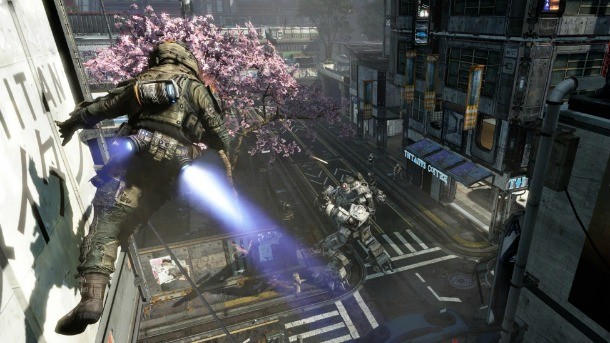Please support Game Informer. Print magazine subscriptions are less than $2 per issue
Should Titanfall Have Been Free-To-Play?

The competitive free-to-play online multiplayer environment plays host to a number of huge titles, from League of Legends and Dota 2 to World of Tanks. With Titanfall’s lack of single-player content and focus on multiplayer, would it have benefitted from a content and monetization model similar to leading free-to-play models to keep players engaged and coming back for more? Has the online environment become one that requires many small content updates as opposed to larger chunks of DLC and microrewards that keep players chasing currency and cosmetics?
While players unlock various weapons and loadout options in Titanfall, the cycle of ranking up to start back at zero seems like a rather outdated concept when we look at the current environment of multiplayer online only titles.
Players appear to want consistent account level progression that goes beyond a simple number or gilded nametag; they want some form of reward for every match played, whether it’s working toward a new cosmetic upgrade, a functional unlock, or even just the chance to get a random reward after each play session. This structure is par for the course for current free-to-play frontrunners, that incentivize each game or match with some kind of permanent reward.
The play-reward cycle creates a form of engagement that goes beyond the gameplay aspects and gets players invested in their accounts. They’re constantly inundated with positive feedback for playing the game beyond winning or losing a match. This can be done without delving into pay-for-power, pay-to-win territory that have been often (and sometimes rightly) chastised forms of free-to-play, but getting players to have a vested interest in advancing their characters and accounts at the base level with just hats, colors, or a referential skin option gives the game another way to create an environment where players feel like they’re getting something for their time outside of another headshot or point cap.

Content offerings for these sort of games also function much differently than the larger blocks of chunked DLC that you’d find for single-player focused titles. We’re looking at new features, cosmetics, playable characters, holiday events, and that sort of thing hitting every two to six weeks on PC multiplayer online-only titles. Update frequency is of utmost importance when there are so many options to pick from in the space, and all these options are fighting for 100 percent of a player’s game time.
One of the powerful effects of players working on their accounts and unlocks in free-to-play titles is that it creates actual game advocates out of core players, even if they never make a purchase. They’re invested at some level in the game’s success to show off and add value to their collections and will bring the game to others. Because these games are free to play, it’s a frictionless sell to their gaming groups and friends to at least download and try them, which is an easy task in comparison to selling a $60 box game to an entire Ventrilo/Mumble/Teamspeak channel full of players.
That’s not to say that the single-price box model doesn’t have its place – it absolutely does, and for a lot of games I think it’s a great way to offer all content to players without the danger of moving into some of the negatives often associated with free-to-play gaming. Titanfall’s specific components make it an interesting beast to consider in the context of what free-to-play has done for other titles that share its multiplayer online-only features.
Could Titanfall be in a better position designed around continuous engagement if it had gone with a free-to-play online multiplayer model? It’s certainly debatable, but I think the game’s strong core would have been well suited to capitalize on the model that continues to dominate PC online gaming.










